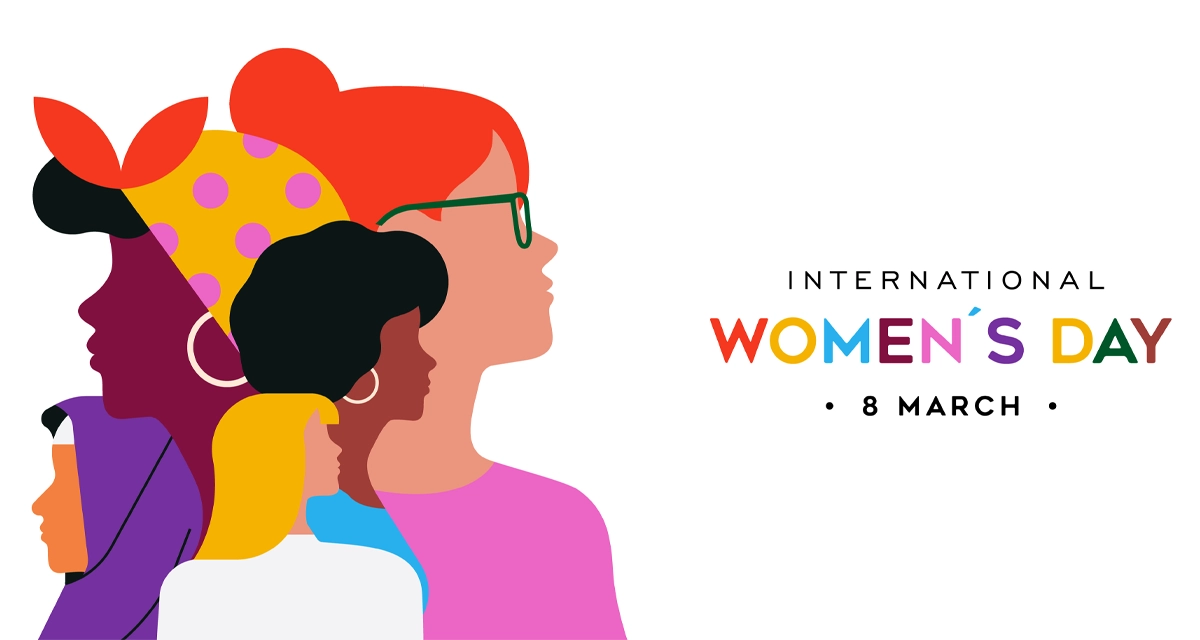International Women’s Day is a globally recognized occasion celebrating the social, economic, cultural, and political achievements of women. It is a day to reflect on progress made, to call for change, and to celebrate acts of courage and determination by ordinary women who have played extraordinary roles in their communities.
History and Origin
Origin of International Women’s Day
The origins of International Women’s Day can be traced back to the early 20th century when women began to advocate for their rights, including better working conditions and suffrage. The first National Women’s Day was observed in the United States in 1909, following a declaration by the Socialist Party of America.
Significance of March 8th
March 8th became the official date for International Women’s Day after a conference in Copenhagen in 1910, attended by over 100 women from 17 countries. Since then, March 8th has been recognized as a day to commemorate women’s rights and achievements worldwide.
Themes and Celebrations
Changing Themes Over the Years
Each year, International Women’s Day is celebrated with a specific theme that highlights pressing issues facing women globally. Themes have ranged from gender equality and women’s empowerment to ending violence against women and girls.
Global Celebrations and Activities
International Women’s Day is celebrated in various ways across the globe, including marches, rallies, panel discussions, art exhibitions, and social media campaigns. It serves as a platform to raise awareness, inspire action, and foster dialogue on gender equality.
Gender Equality and Women’s Rights
Progress and Challenges
While significant progress has been made in advancing gender equality and women’s rights, challenges persist. Women continue to face discrimination, violence, and unequal access to opportunities in many parts of the world.
Intersectionality and Inclusivity
It is essential to recognize the intersectionality of gender with other factors such as race, ethnicity, class, sexuality, and ability. Intersectional feminism advocates for inclusivity and addresses the unique experiences and challenges faced by women from diverse backgrounds.
Inspirational Women and Movements
Notable Figures in Women’s Rights
Throughout history, countless women have made significant contributions to advancing women’s rights and social justice. From suffragists and civil rights activists to contemporary leaders and grassroots organizers, their stories inspire future generations to strive for equality.
Impactful Movements
Various movements, such as the women’s suffrage movement, feminist movements, and women’s rights advocacy groups, have played a crucial role in challenging gender norms, advocating for policy changes, and promoting women’s empowerment.
Women in Leadership and Empowerment
Advancements and Opportunities
There has been a notable increase in women’s representation in leadership roles across sectors such as politics, business, academia, and the arts. Women leaders bring diverse perspectives, skills, and talents to decision-making processes, driving innovation and progress.
Challenges Faced
Despite advancements, women still face barriers to leadership, including gender bias, unequal access to resources and opportunities, and lack of support structures. Efforts to address these challenges are essential for achieving gender parity in leadership positions.
Fighting Gender-Based Violence
Awareness and Advocacy
Gender-based violence, including domestic violence, sexual assault, and human trafficking, remains a significant barrier to women’s rights and equality. International Women’s Day provides an opportunity to raise awareness, advocate for survivors, and demand accountability from perpetrators.
Support Systems and Resources
Access to support systems, including shelters, hotlines, legal aid, and counseling services, is crucial for survivors of gender-based violence. Strengthening these resources and ensuring survivors’ voices are heard are essential steps toward ending violence against women.
Economic Empowerment of Women
Closing the Gender Pay Gap
Achieving economic equality requires closing the gender pay gap and promoting equal pay for equal work. Employers, policymakers, and stakeholders must take proactive measures to address wage disparities and create inclusive workplaces.
Entrepreneurship and Financial Independence
Entrepreneurship provides women with opportunities for economic independence and empowerment. Supporting women entrepreneurs through access to financing, mentorship, and training programs can unlock their full potential and drive economic growth.
Education and Literacy
Access to Education
Access to quality education is a fundamental right that empowers women and girls to reach their full potential. Investing in girls’ education has far-reaching benefits, including improved health outcomes, poverty reduction, and sustainable development.
Promoting STEM for Women
Encouraging women’s participation in science, technology, engineering, and mathematics (STEM) fields is crucial for bridging gender gaps and fostering innovation. Initiatives to promote STEM education and careers for women are essential for building a more diverse and inclusive workforce.
Health and Well-being
Reproductive Health Rights
Ensuring access to comprehensive reproductive health services, including family planning, maternal health care, and reproductive rights, is essential for women’s health and well-being. Upholding reproductive rights empowers women to make informed choices about their bodies and futures.
Mental Health Awareness
Addressing mental health issues, including depression, anxiety, and trauma, is vital for women’s overall well-being. Destigmatizing mental illness, promoting access to mental health services, and providing support networks are critical steps in promoting mental health awareness and resilience.
Role of Media and Technology
Representation in Media
The media plays a significant role in shaping perceptions of gender roles and reinforcing stereotypes. Increasing representation of women in media and challenging harmful portrayals can contribute to more inclusive and diverse narratives.
Digital Divide and Gender Bias
Addressing the digital gender gap and combating online harassment and cyberbullying are essential for promoting digital inclusion and safety for women and girls. Creating safer online spaces and fostering digital literacy are crucial steps in addressing gender bias and discrimination online.
Corporate Responsibility and Gender Diversity
Promoting Inclusive Workplaces
Corporate leaders have a responsibility to create inclusive workplaces that promote diversity, equity, and inclusion. Implementing policies and practices that support gender diversity, such as flexible work arrangements and parental leave policies, can improve retention and employee satisfaction.
Leadership Diversity Initiatives
Promoting women’s advancement into leadership positions requires proactive initiatives, including mentorship programs, leadership development training, and transparent promotion processes. Diverse leadership teams contribute to better decision-making and organizational performance.
Government Policies and Legislation
Laws Protecting Women’s Rights
Enacting and enforcing laws that protect women’s rights, including laws against gender-based violence, discrimination, and harassment, are essential for ensuring gender equality and justice. Governments must prioritize legislative reforms that uphold women’s rights and promote gender equality.
Challenges in Implementation
Despite the existence of laws and policies, implementation gaps, inadequate resources, and institutional barriers often hinder progress in advancing women’s rights. Addressing these challenges requires political will, community engagement, and sustained advocacy efforts.
International Women’s Day in the 21st Century
Future Directions
As we look to the future, it is essential to continue advocating for gender equality, women’s rights, and social justice. International Women’s Day serves as a reminder of the work that remains to be done and the collective effort required to create a more equitable and inclusive world.
Continued Advocacy and Activism
Sustained advocacy and activism are necessary for driving meaningful change and advancing women’s rights globally. By amplifying women’s voices, challenging systems of oppression, and building solidarity across movements, we can create a more just and equitable society for all.
Conclusion
International Women’s Day is a time to celebrate the achievements of women and reflect on the progress made toward gender equality. It is also a reminder of the ongoing struggles and challenges faced by women worldwide. By working together, we can build a more inclusive and equitable world where every woman and girl can thrive.
FAQs
- Why is International Women’s Day celebrated on March 8th? International Women’s Day is celebrated on March 8th to commemorate women’s rights and achievements and to highlight ongoing struggles for gender equality globally.
- What is the significance of the theme for International Women’s Day each year? The theme for International Women’s Day reflects pressing issues facing women and serves as a call to action to address these challenges and promote gender equality.
- How can individuals support gender equality and women’s rights on International Women’s Day? Individuals can support gender equality and women’s rights by participating in events, advocating for policy changes, amplifying women’s voices, and supporting women-led initiatives and organizations.
- What are some examples of intersectional feminism in action? Intersectional feminism recognizes that gender intersects with other identities and experiences, such as race, class, and sexuality. Examples include advocating for policies that address the unique needs of marginalized women and challenging systems of oppression.
- How can businesses contribute to gender equality and women’s empowerment? Businesses can promote gender equality and women’s empowerment by implementing policies and practices that support diversity and inclusion, closing the gender pay gap, and providing opportunities for women’s leadership and advancement.





